Weber Piano Action Rebuild – Assembly and Adjustments
We were hosting a group of our pianist friends on Saturday, and I hoped to have the action back together and with luck, installed in the piano for a little preliminary “plunking”. Time was short!
Up to this point, everything was in pieces and as you’ve seen in previous posts:
- The keyframe had been cleaned, sanded and given a new coat of shellac.
- New felt and punchings were installed.
- Pins were cleaned and lubricated.
- Keys had been cleaned and sanded.
- Loose ivory had been reattached and missing wood under the sharps had been replaced.
- The sharps were stripped of varnish and refinished with Danish Oil.
- New key end felts were installed.
- New Robertson (square drive) screws were installed in the rocker arms.
- The wippens had been cleaned.
- Action centers and jacks had been tested for motion and lubricated.
- The wippens cushions had been repaired.
- New hammers were installed.
It was time to reassemble them into a working action and try it in the piano.
With the keys installed in the keyframe, I attached the wippens and hammer rails. Now for the hard part: reattaching the linkage that connects each wippens to its mating rocker arm. In a modern grand piano, this step is easy — each wippens simply rests on a capstan. In 1893 each wippens was connected to the key with a wooden link that snapped over a rocker arm pin. Each must be connected separately, and in a tight space. Small wonder this system was abandoned for the simpler capstan system. It took me about an hour to get them all connected using a special pliers.
Preliminary Adjustments
With this collection of new and old parts, some preliminary adjustment was needed to achieve basic operation. Setting the hammer height was first. Normally the hammer shanks float about a shank’s width above the wippens cushion, and the capstan in a modern piano, or the rocker arms in this case, are adjusted to float each hammer. Now we learn the other disadvantage the rocker arm system. In order to adjust the pin the supports the wippen link, two screws must be turned instead of just one. Another hour or two were spent setting the initial hammer height.
I could now press keys and cause the hammers to actuate. I needed something to simulate the strings and stop the hammer travel as if the action were installed in the piano. Using a long piece of poplar, I created a rail and mounted it above the table at the required string height. Since the piano has different string heights for the bass and treble notes, I also cut a portion of the rail to the correct height. Now I could actuate hammers and they hit the rail with a satisfying thwack!
Not all the keys worked the same however. Some would tap the rail and fall away as desired, but most hit the rail and stayed there. The let-off would have to be adjusted. By the time I adjusted each let-off button, it was time to quit for the day. Putting it in the case would have to wait until tomorrow.
Let’s get this show on the road!
Saturday dawned, the day of our piano gathering. I was excited to get the action into the case, and moved it in from the shop. Setting the heavy and awkward action onto the keybed, I began to slide it into place. It didn’t fit! New parts in the action, combined with changes in humidity since February (when they were last together) had allowed the top of the action to bind on the bottom of the pin block. A couple of texts to Bernard established I would have to shave the bottom of the pin block with a wood plane. Well, at least there was a potential solution.
It took about an hour of shaving before I got the action into the case. It was still tight, but the very roughly adjusted action was functional. I could play the Weber for the first time in six months. What a big difference! The new hammers had tamed the previously brittle tone, and I had some ability to shape softly played notes — in spite of the rough regulation. I was beginning to think this might work!
The Baldwin was still the star for our piano gathering, and we played several great pieces of music for each other that evening. Everyone was intrigued by the Weber however. Not ready to play, but definitely promising, and I was about to learn about The Circle of Refinement.
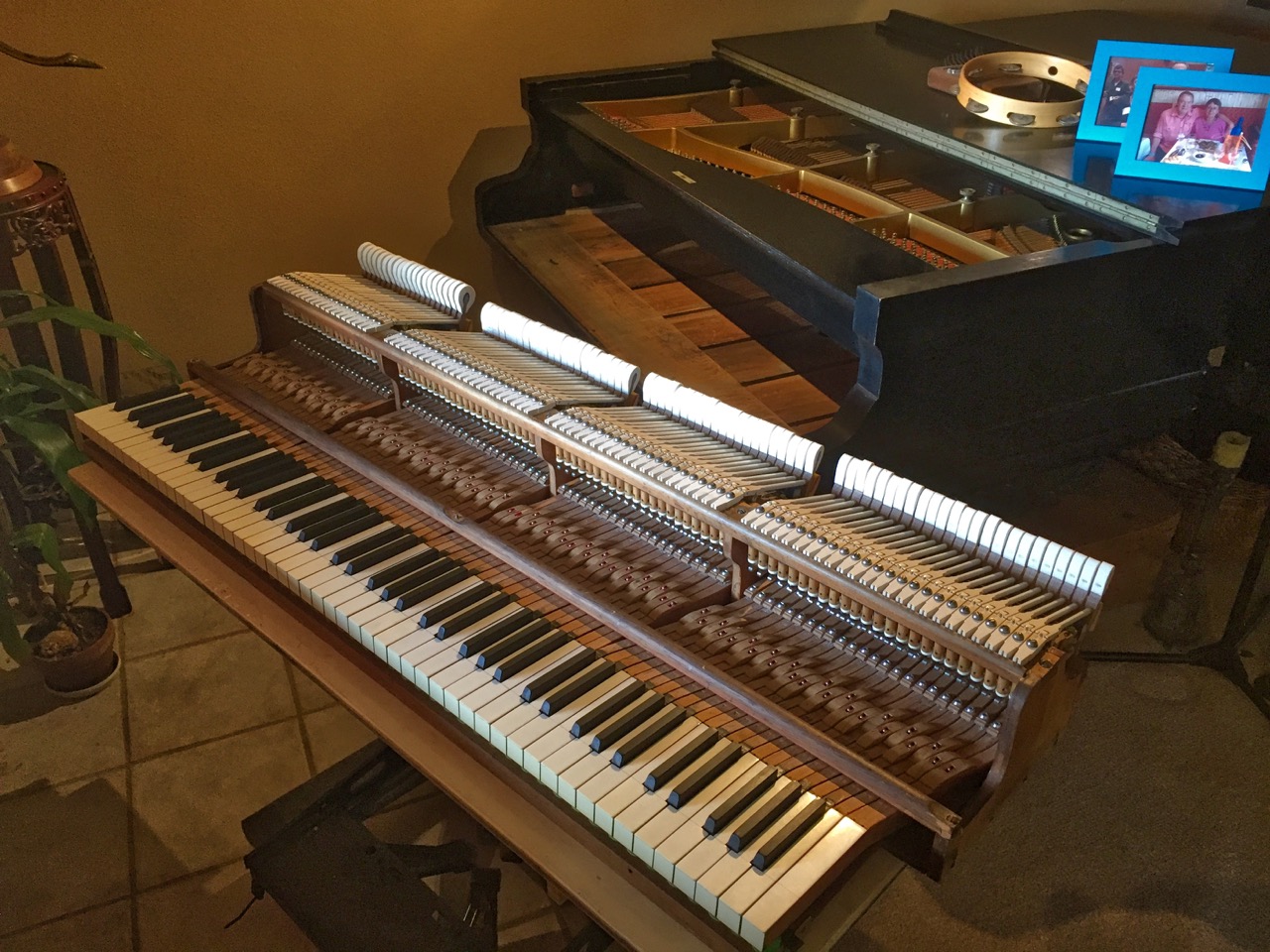
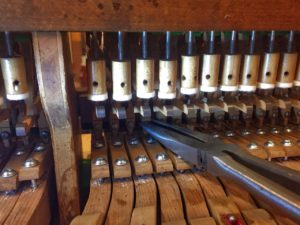
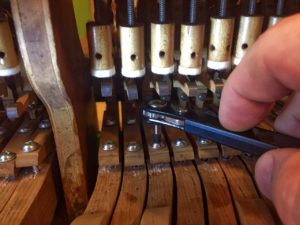
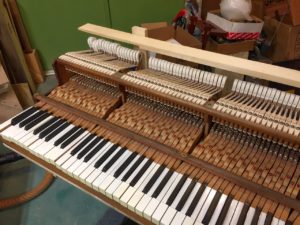
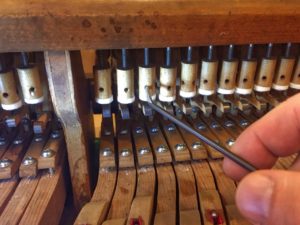
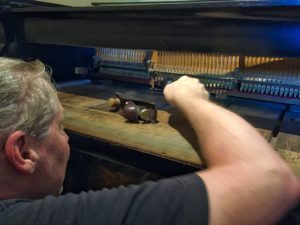
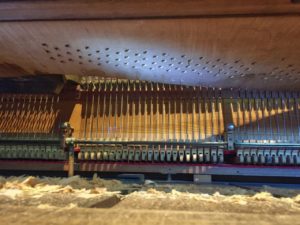
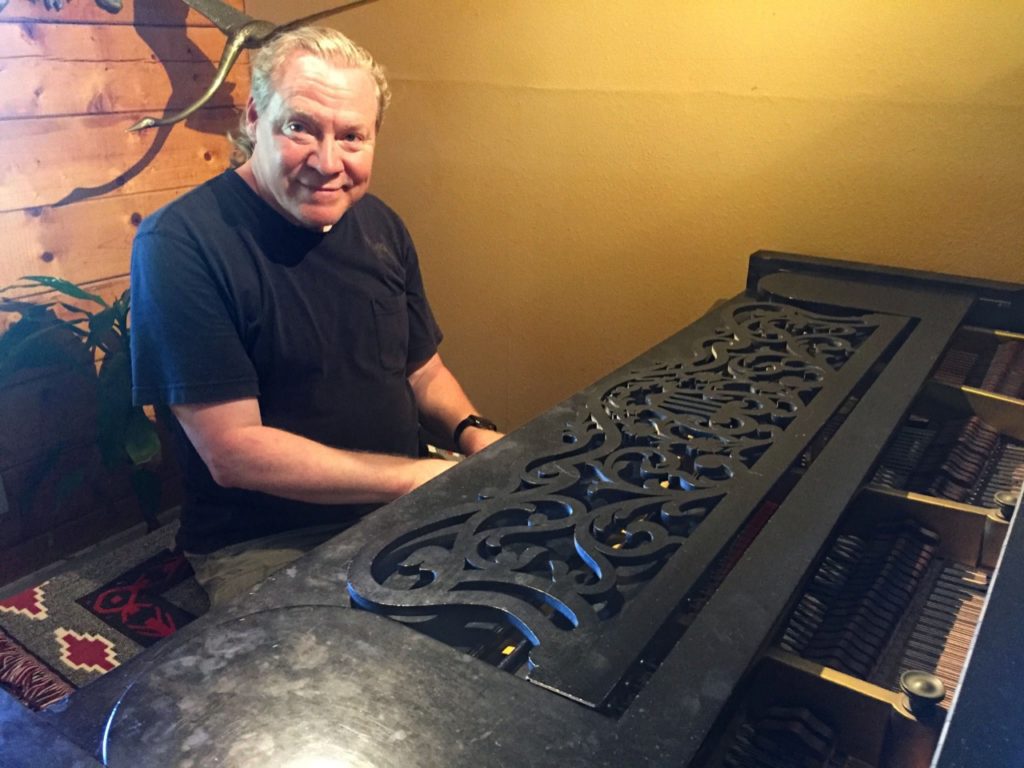
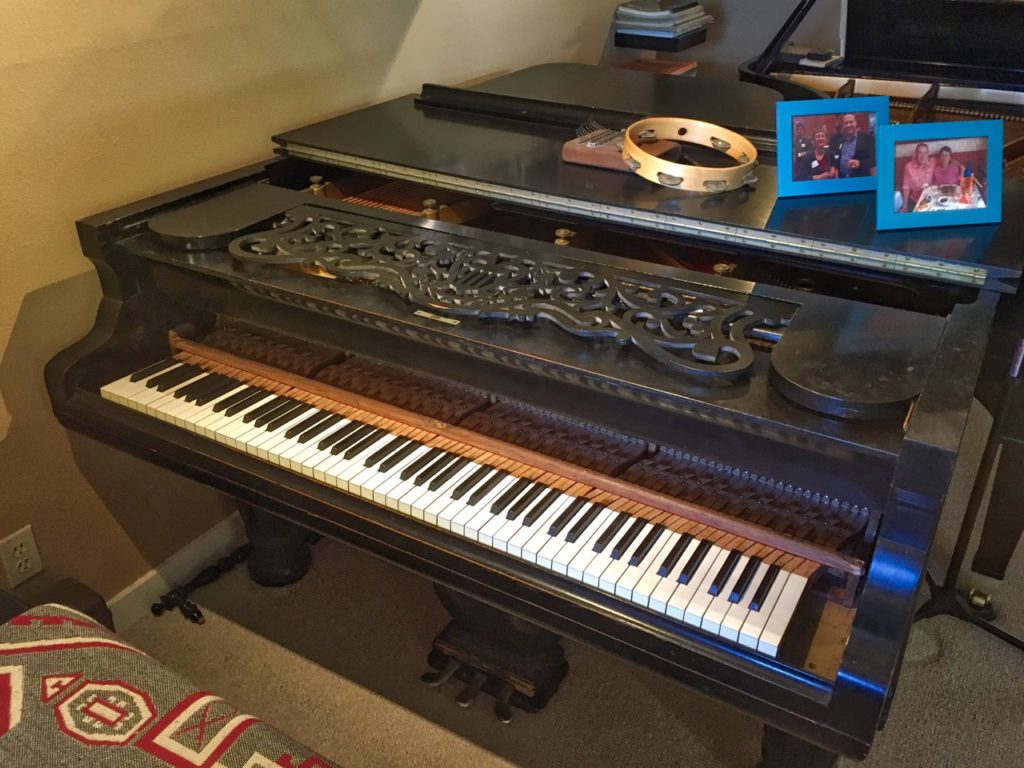
Pingback:Weber Piano Action Rebuild – Key Leveling and Key Weights | Roy Creek Ranch
Pingback:Weber Piano Action Rebuild – The Circle of Refinement | Roy Creek Ranch